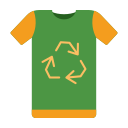Theme of this edition: Eco-Friendly Textile Recycling Techniques. Explore practical methods, real-world innovations, and heartfelt stories that prove discarded fabrics can become valuable resources again. Subscribe and share your questions to shape our next deep dive.
Correctly identifying fibers is the foundation of eco-friendly textile recycling techniques. Labels help at home, while industrial facilities use near-infrared scanners. Accurate sorting prevents contamination and unlocks higher-value recycling pathways.
Understanding the Circular Textile Loop
Mechanical recycling shreds fabrics into fiber for insulation, yarn blends, and nonwovens. Chemical routes break materials to molecular building blocks, enabling near-virgin quality outputs. Choosing a pathway depends on fiber type, condition, and contamination.
Understanding the Circular Textile Loop
Hands-On Recycling at Home and Community Scale
Plan your cuts to maximize yield and minimize fray. Old tees become tote bags, pillowcases, and cleaning cloths. By standardizing patterns, community sewing circles scale eco-friendly textile recycling techniques efficiently and beautifully.
Traditional shoddy mills transformed rags into new fibers; you can mirror that spirit. Braided rag rugs, pieced quilts, and hand-carded stuffing convert unwearable textiles into durable, lovable items with practical, long-lasting utility.
Host quarterly events that combine clothing swaps with fabric sorting and mobile shredders. Volunteers triage items for reuse, upcycling, or mechanical recycling. Transparent bins and signage teach techniques while diverting significant kilograms from landfill.
Industrial Innovations Transforming Textile Waste
Enzymatic Cotton Regeneration
Cellulase enzymes selectively process cotton, creating clean pulp that can be spun into new cellulose-based fibers. These eco-friendly textile recycling techniques reduce harsh chemicals and enable higher-quality outputs from post-consumer waste streams.
Depolymerizing Polyester into Building Blocks
Glycolysis and methanolysis break polyester into monomers or oligomers, which are purified and repolymerized. This restores strength and clarity, enabling bottles, films, and yarns while meaningfully reducing dependence on virgin petrochemical feedstocks.
Ionic Liquids for Cellulose Dissolution
Advanced solvents dissolve cotton and viscose into a homogenous solution, filtered and extruded into new filaments. Closed-loop solvent recovery and careful input sorting make these eco-friendly textile recycling techniques increasingly scalable and sustainable.
Designing Garments for Future Recycling
Mono-Material Construction and Recyclable Trims
Choose one dominant fiber per garment and trims that match the fiber, such as polyester zippers on polyester jackets. Fewer mixed materials accelerate eco-friendly textile recycling techniques and lower losses during mechanical or chemical processing.
Thread, Labels, and Detachability
Design with snap-off labels, minimal interfacing, and sewing threads compatible with the main fiber. Strategically placed, easy-to-open seams make removal of metal hardware simple, boosting throughput and quality in downstream recycling steps.
Digital Product Passports and Sorting
Embedded QR codes or NFC tags can encode fiber content, dye classes, and trim details. Accurate data speeds sorting and selects optimal eco-friendly textile recycling techniques, reducing guesswork, reprocessing, and unnecessary energy consumption.
Measuring Impact and Avoiding Greenwash
Water, Energy, and Carbon Savings
Recycling cotton can save thousands of liters of water per kilogram compared to virgin cultivation, while recycled polyester reduces demand for new petrochemicals. Track savings per item to illuminate which techniques deliver the greatest benefits.
Traceability and Certification Basics
Chain-of-custody certifications and documented mass balance help verify recycled content. Pair credible documentation with clear explanations of eco-friendly textile recycling techniques, emphasizing processing steps, inputs, and recovery rates to inform readers without exaggeration.
Setting Practical Household Metrics
Define goals like kilograms diverted, items repaired, or hours volunteered at community sorting hubs. Simple tracking turns eco-friendly textile recycling techniques into a habit, rewarding progress and spotlighting where more support or tools are needed.
Stories from the Sorting Table
A Family’s Denim Reborn as Insulation
Three generations boxed torn jeans after a flood ruined the knees. A local micro-mill shredded the denim into dense insulation panels, warming their renovated attic and warming their resolve to keep textiles circulating.
A Tailor’s Offcuts Loop
A neighborhood tailor began batching cotton offcuts weekly, sending them to a paper studio that blends textile pulp with agricultural waste. The collaboration transformed scrap into notebooks, pattern cards, and beautiful packaging materials.
School Club Builds a Micro-Factory
Students mapped materials, sourced secondhand machines, and piloted eco-friendly textile recycling techniques on campus uniforms. Their color-sorted shoddy fiber became acoustic panels for the music room, inspiring parents to sponsor additional collection days.



